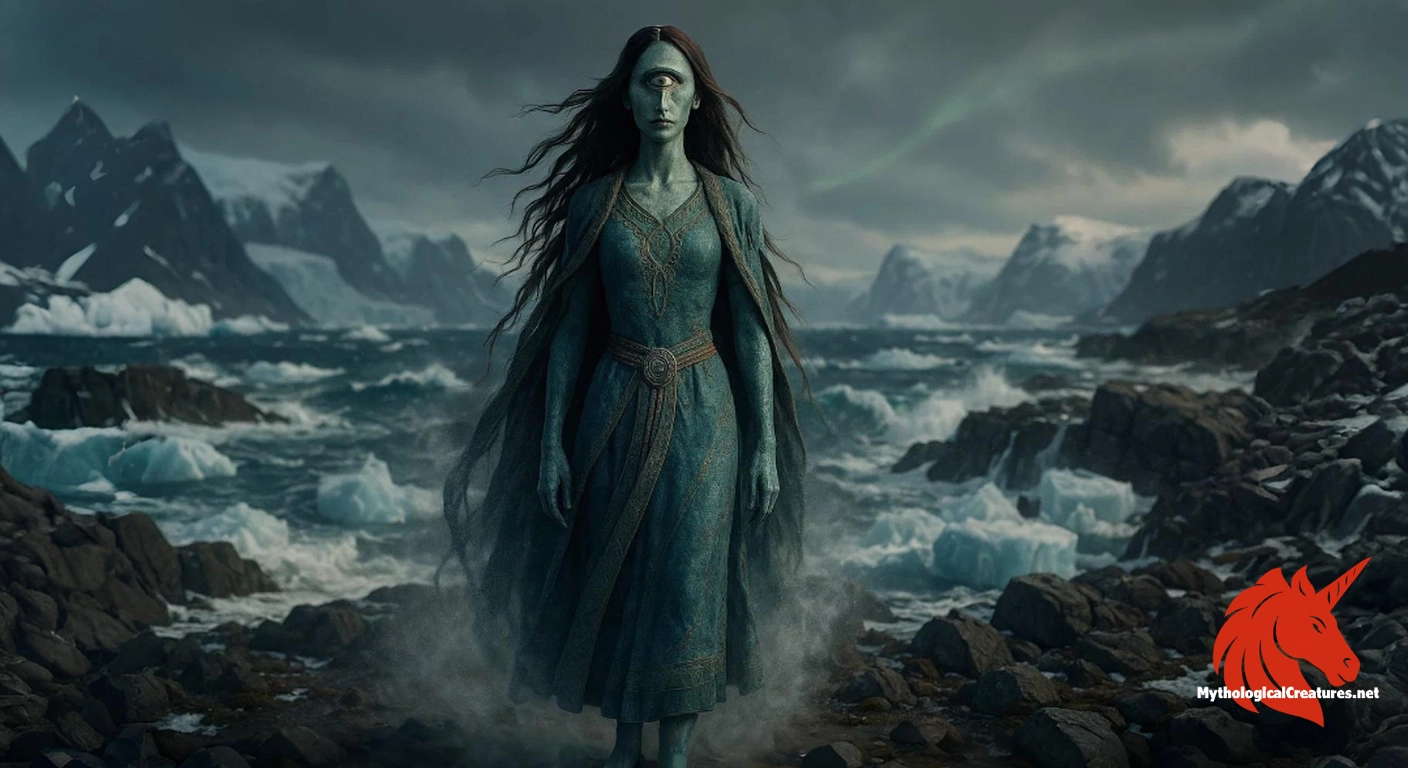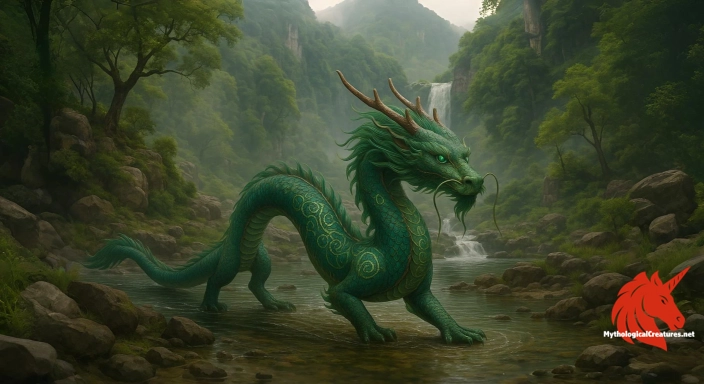Idliragijenget: Idliragijenget, also known as Sedna, is an Inuit goddess who reigns over the ocean and the underworld.

Idliragijenget
Idliragijenget - Central figure influencing marine life and the fate of souls in the afterlife
Origins & First Encounters
Idliragijenget stands as one of the most intriguing divinities in Inuit mythology, revered as both the goddess of the ocean and the sovereign of the underworld, Adlivun. Her enigmatic name, meaning 'she who sleeps in the house of the wind', evokes a mystical quality that reflects the forces of nature she governs. Emerging from the deep well of Arctic oral traditions, her narrative has been passed down to symbolise the eternal dance between life, death, and the natural world. Her origins are wrapped in ancient legends where the boundaries between the celestial, the terrestrial, and the aquatic blur into a single cosmic tapestry. Early attestations reveal her unique role by aligning her dominion with the cycles of the seasons, ensuring that summer and winter remain distinct. The poignant relationship with her father, Savirqong, whose solitary eye mirrors the moon, further enriches her mythic persona. In many retellings, the physical separation between her and her father within one vast dwelling downplays the conventional boundaries between realms. The goddess’s enduring appeal reflects the intimate connection the Inuit people maintain with the sea and the harsh but beautiful Arctic environment. Her story, woven with symbolism and elemental power, continues to resonate as a reminder of nature’s indomitable spirit and the mysteries of existence.
Source Texts & Tale Variants
The primary accounts of Idliragijenget arise predominantly from the living oral traditions of the Inuit, where her story is interlaced with the myths of the sea and the underworld. Early ethnographic records and shamanic chants have immortalised her as a figure who governs both the watery domains and the mysterious afterlife of Adlivun. Variants of her story sometimes merge with the narrative of Sedna, the well-known sea goddess, thereby widening the scope of her influence and the contexts in which she is revered. Different communities have recorded her character in diverse ceremonial texts and ritual recitations, each emphasising distinct aspects of her dual dominion. These varied recordings underscore how her myth adapts to the local realities of life in the Arctic. Some oral traditions highlight the cosmic separation between her and her father, Savirqong, shedding light on the symbolic partition of realms. Additional variants include detailed allegories related to seasonal changes, where her presence is integral to maintaining the balance between nature’s cyclical forces. The evolution of her myth in the recorded texts reflects the dynamic interplay between tradition and adaptation in Inuit spirituality. The narrative’s elasticity has allowed it to absorb regional nuances, ensuring its transmission through generations despite shifting cultural landscapes.
Form & Powers
Idliragijenget is often vividly portrayed with striking features that evoke both beauty and otherworldliness. Traditional descriptions suggest she bears a singular, luminous eye, a trait that symbolically mirrors the moon and resonates with her cosmic heritage. Her visage is imbued with the gentle yet relentless power of the ocean, displaying an ethereal glow that hints at the mysteries of the deep. In artistic portrayals, her form is fluid and graceful, as though she is sculpted from the very essence of the sea, with long flowing contours reminiscent of underwater currents. Some visions include elements drawn from the Arctic landscape, such as hair that shimmers like strands of ice and garments that reflect the subtle hues of a polar twilight. Although her size is not often explicitly defined, she is frequently depicted as both majestic and imposing—a reflection of the vast oceanic expanses she commands. Her appearance is a melding of formidable strength with serene grace, a quality that captures both the beauty and the danger of her domains. The recurring motif of the solitary eye speaks to a deeper, symbolic observation of the cosmos, encapsulating insight and the mystique of night. Across different artistic renditions, the interplay of light and shadow remains a central theme in conveying her dual nature as a nurturer of life and a guardian of the afterlife.
Regional Faces
Regional interpretations of Idliragijenget vary significantly across the vast Inuit territories, highlighting the adaptability of her myth to local environmental and cultural contexts. In some communities, particularly in parts of Canada, her narrative is primarily focused on her role as the goddess of the ocean, underscoring the central part water plays in daily survival. Meanwhile, in regions of Greenland, her association with the underworld, Adlivun, is more emphasised, reflecting a local perspective that integrates the harsh, unyielding polar winters into her mythic identity. In Alaskan traditions, she is sometimes envisioned as a transformative force—a bridge linking the mortal world with the spirit realm, which aligns closely with the indigenous understanding of nature’s unpredictable cycles. Local adaptations often incorporate additional elements, such as the personification of wind or frost, thereby enriching her overall character. Artistic renditions in different regions have infused her imagery with unique stylistic elements, from intricate carvings to contemporary murals that highlight her spectral form. Despite these regional differences, a recurring theme remains: the careful balance between the forces of life and death as dictated by the rhythms of the natural environment. This diversity in portrayal not only testifies to the goddess’s broad appeal but also exemplifies how vital her myth is to the cultural identity of Arctic communities. Over time, these regional narratives have converged and diverged, allowing Idliragijenget’s myth to serve as a living symbol of adaptation and resilience across the circumpolar world.
Cultural Parallels
Idliragijenget shares intriguing parallels with other mythological figures from diverse global traditions, symbolising the interconnection between the realms of sea and afterlife. Similar to the Greek deity Amphitrite, whose dominion lies within the vast and unpredictable ocean, Idliragijenget encapsulates the beauty and danger imbued in aquatic mythology. In Norse myths, the goddess Rán also presides over the sea, attracting drowned souls in a manner that mirrors Idliragijenget’s role as a mediator between life and death. While her singular, luminous eye is distinct, the motif of a unique visual or divine sight appears in several cultural narratives as a symbol of cosmic insight. Comparisons can also be drawn with chthonic deities from other cultures, where the boundary between the living and the underworld is maintained by a single powerful entity. Like many indigenous deities, she is not confined to a single attribute but represents the complex interplay between natural forces and spiritual realities. The duality in her nature invites comparisons with figures from other cultural mythologies who embody both nurturing and destructive elements. Such cross-cultural connections highlight a universal human endeavour to understand and encapsulate nature’s cycles through deific personifications. Her myth, therefore, not only resonates within the Arctic narrative but also contributes to a broader, interconnected tapestry of global mythological tradition. By embracing multifaceted roles and attributes, Idliragijenget stands as a compelling archetype of transformation and balance across cultures.
Legacy & Modern Evolution
Over the centuries, the myth of Idliragijenget has evolved from oral traditions into a subject of academic inquiry and contemporary artistic reinterpretation. Early narratives, steeped in the natural cycles and spiritual beliefs of the Inuit, have given way to broader interpretations that incorporate modern themes of environmental stewardship and cultural resilience. Today, her image is frequently reimagined as a symbol of female empowerment and the interconnectedness of life, death, and the natural world. Contemporary indigenous artists have celebrated her enigmatic persona through various media, including paintings, sculptures, and digital imagery, thereby preserving her legacy while adapting it to modern sensibilities. The transformation of her myth reflects not only shifts in artistic expression but also a deeper re-evaluation of indigenous knowledge systems in the face of modern challenges. Modern reinterpretations often highlight the environmental symbolism inherent in her story, drawing attention to the enduring significance of the ocean and its fragile ecosystems. Her narrative has also found resonance in discussions of cultural reclamation, where indigenous communities assert the importance of their ancestral traditions. As academic circles continue to explore and contextualise her myth, Idliragijenget remains a powerful conduit for understanding the dynamic relationship between the natural environment and human spirituality. This evolving legacy ensures that her story remains both a cherished cultural treasure and a living symbol of adaptation in a changing world.
Interesting Fact
An intriguing aspect of Idliragijenget is her dual identity as both Sedna and the ruler of the underworld, illustrating the fluidity of myth where one figure can embody multiple roles and domains.
Quick Creature Info
Origin:
Associations:
Our Mythic Legendary Rating:

Also Sometimes Known As:
Habitat:
Supernatural Powers:
Physical Attributes:
Abilities:
Behavior:
Lore:
Related Creatures, Tales or Lore
References
Discover Another Mythical Legend You May Not Have Heard Of?
Uncover the mysteries of ancient folklore and expand your knowledge of legendary beings from cultures around the world.
Dare to Meet the Chinese dragon....
Mythical Disclaimer: The images and data on this site are derived from various historical and literary sources, but we have found that many myths often have multiple versions and interpretations across references, sometimes contradictory. As a result, these creature depictions are artistic interpretations—imaginative blends of folklore, legend, and a dash of AI guesswork. Because creature descriptions vary widely, our illustrations and accompanying information represent our best effort to honor mythology while bridging creative gaps. Enjoy these interpretations—just remember, we've done our best to respect the stories and validate available data, but in the realm of mythology, details often shift, imagination leads the way, and nothing is ever set in stone!
Curated by the Mythological Creatures Team (rev. May 2025)
